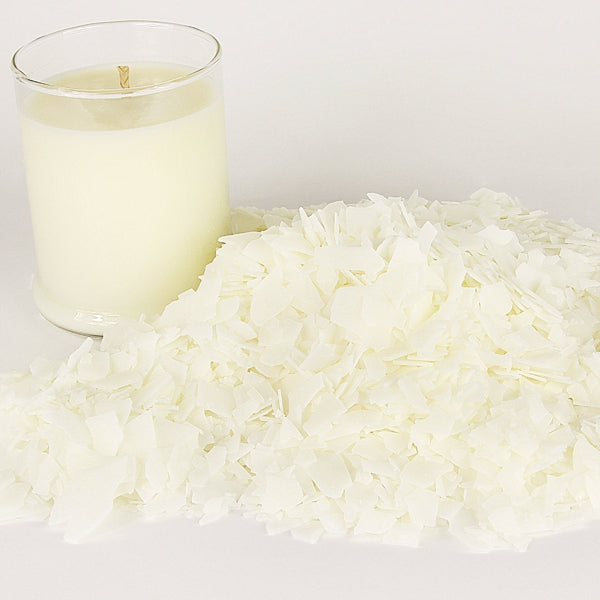Improve Your Living Room with Elegant Soy Candles and Home Fragrance
Improve Your Living Room with Elegant Soy Candles and Home Fragrance
Blog Article
From Wick to Wax: Understanding the Chemistry Behind Soy Wax Candles and Their Environmental Effect
As we brighten our spaces with the warm glow of candle lights, there lies a world of complex chemistry behind the relatively easy act of lighting a soy wax candle light. Join us as we decipher the clinical details behind soy wax candles and discover their effects on our environment.
Soy Wax Vs. Paraffin Wax
When comparing soy wax and paraffin wax for candle light production, it is necessary to recognize the distinct qualities and benefits of each material. Soy wax is a natural, sustainable resource stemmed from soybean oil, making it green and biodegradable - crystal soy candles. In comparison, paraffin wax is a result of petroleum refining, which raises problems concerning its environmental influence and sustainability
Soy wax candle lights melt cleaner and emit less residue compared to paraffin wax candle lights, making them a healthier selection for interior air top quality. Furthermore, soy wax has a reduced melting point, enabling a longer-lasting candle light that distributes scent extra properly. Paraffin wax, on the other hand, often tends to melt faster and less easily, potentially launching dangerous chemicals into the air.
From a sustainability viewpoint, soy wax is favored for its biodegradability and eco-friendly sourcing, lining up with the expanding customer preference for ecologically conscious products. While paraffin wax has been a standard selection in candle making because of its price and convenience of use, the change in the direction of eco-friendly options like soy wax is acquiring energy in the industry.
Chemical Composition of Soy Wax

Burning Refine in Soy Candles
The chemical structure of soy wax directly affects the burning process in soy candle lights, influencing variables such as burn time, fragrance release, and environmental influence. When a soy candle light is lit, the warmth from the flame thaws the wax near the wick. This fluid wax is after that formulated the wick due to capillary action. As the liquid wax reaches the fire, it vaporizes and undergoes combustion. The combustion procedure includes the vaporized hydrocarbons in the wax reacting with oxygen in the air to produce warm, light, water vapor, and carbon dioxide.
The burning efficiency of soy candle lights is affected by the purity of the soy wax and the quality of the wick. In addition, soy wax candles have a lower environmental effect contrasted to paraffin candle lights due to their eco-friendly official source and biodegradable nature.

Ecological Advantages of Soy Wax

Taken into consideration a lasting alternative to conventional paraffin wax, soy wax provides noteworthy ecological benefits that make it a prominent choice amongst eco-conscious pop over to this web-site consumers. One significant advantage of soy wax is its sustainable sourcing. Soy wax is obtained from soybean oil, which is mostly cultivated in the United States. The growing of soybeans helps support regional farmers and lowers the dependency on non-renewable fossil gas used in paraffin wax production. Furthermore, soy wax is naturally degradable, implying it damages down naturally without releasing hazardous contaminants right into the environment. This characteristic makes soy wax candle lights an extra eco-friendly alternative compared to paraffin wax candles, which are made from oil, a non-renewable source. Moreover, soy wax burns cleaner and generates much less residue than paraffin wax, adding to far better indoor air quality and minimizing the requirement for cleaning and maintenance. Generally, the ecological advantages of soy wax line up with the growing need for environmentally friendly and sustainable items on the market.
Recycling and Disposal Factors To Consider
Recycling and correct disposal of soy wax candles play an important function in keeping environmental sustainability and decreasing waste in houses and communities. When it comes to recycling soy wax candle lights, the initial step is to guarantee that the candle has shed totally.

In regards to disposal, if recycling is not an alternative, soy wax candle lights are eco-friendly and can be safely taken care of in many family waste systems. Nevertheless, it is always advised to get in touch with local reusing facilities or waste management services for specific standards on candle light disposal to make sure appropriate handling and environmental management.
Verdict
Finally, the chemistry behind soy wax candles exposes their ecological advantages over paraffin wax candle lights. Soy wax, stemmed from soybean oil, burns cleaner and generates much less soot when contrasted to paraffin wax. The burning process in soy candle lights is extra effective, resulting in a much longer and extra also shed. Additionally, soy wax is eco-friendly and eco-friendly, making it a more sustainable selection for candle light manufacturing. Recycling and appropriate disposal of soy wax candle lights further add to their environmental influence.
When contrasting soy wax and paraffin wax for candle production, it is vital to understand the distinct features and advantages of each product (soy wax candles).Soy wax candle lights melt cleaner and give off less soot contrasted to paraffin wax candles, making them a healthier choice for indoor air quality.Thought about a lasting option to standard paraffin wax, soy wax uses noteworthy environmental benefits that make it a prominent choice amongst eco-conscious consumers. Soy wax burns cleaner and produces much less residue than paraffin wax, contributing to better indoor air top quality and decreasing the requirement for cleansing and maintenance.In conclusion, the chemistry behind soy wax candle lights reveals their environmental advantages over paraffin wax candle lights
Report this page